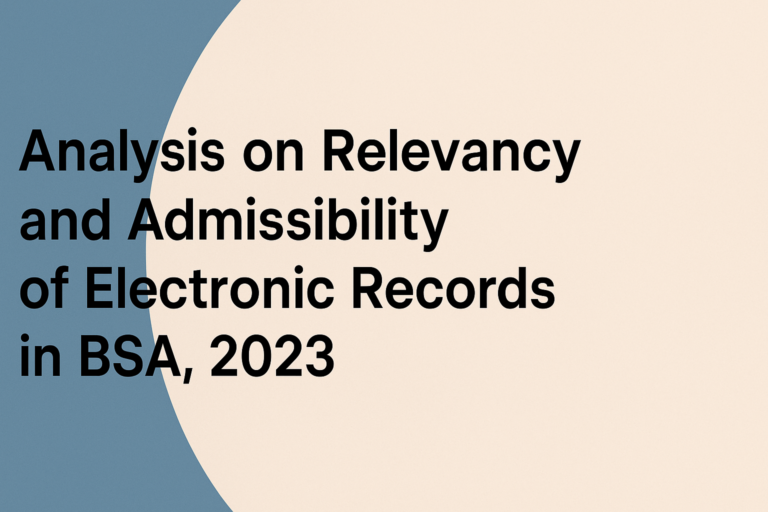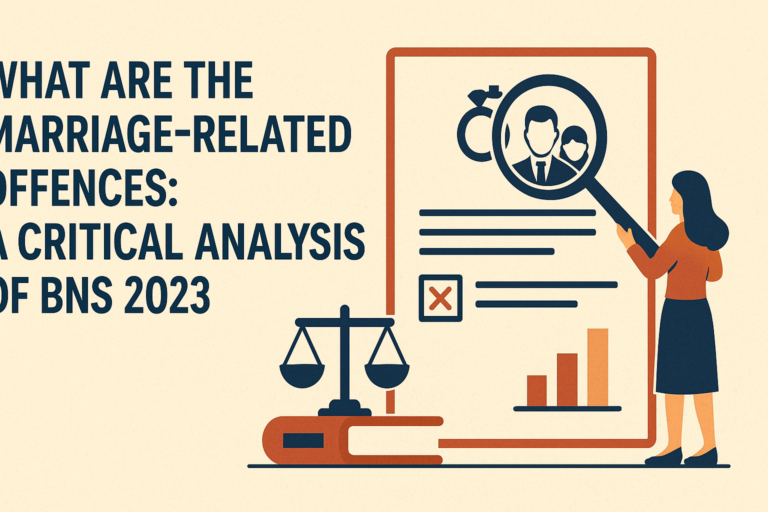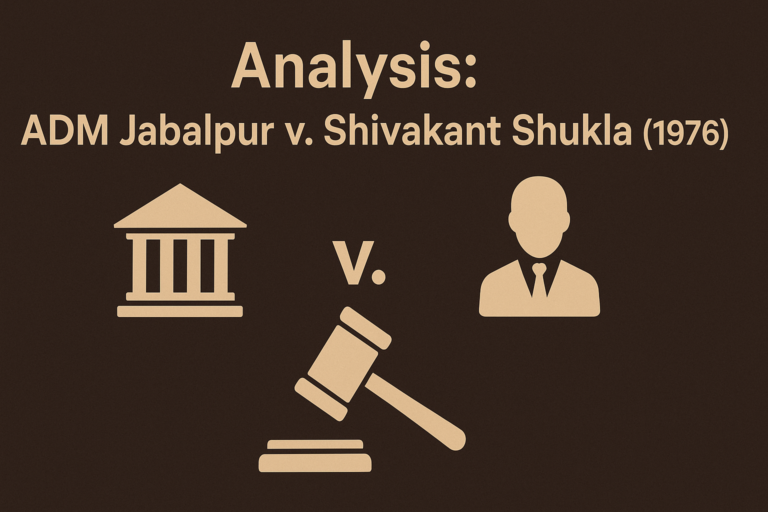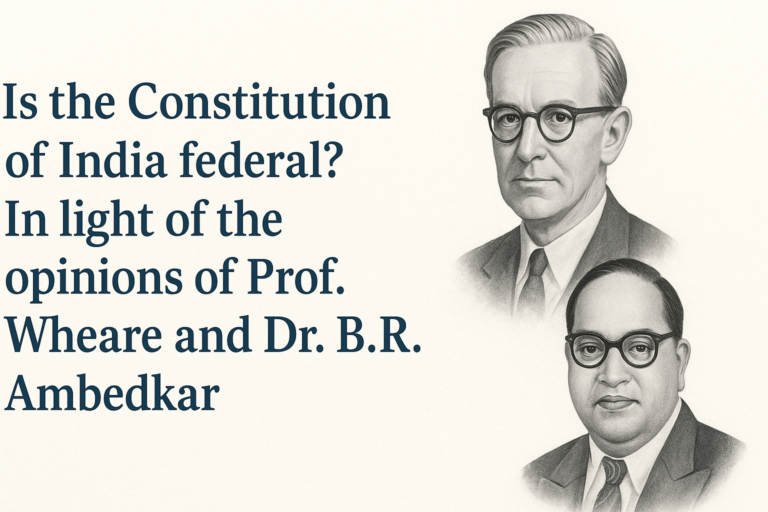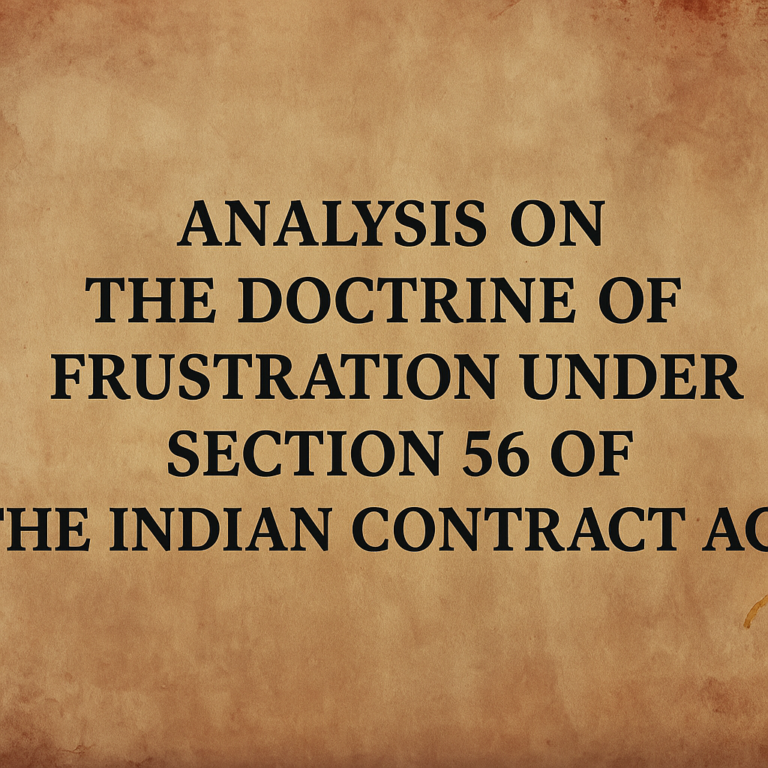
This article has been written by Swagat Kumar Tripathy (currently pursuing a B.A LL.B at the SoA National Institute of Law, Odisha)

Swagat Kumar Tripathy
Introduction
If society is viewed as an establishment, the foundation stone of that establishment will be the relationship between crime and punishment. In primitive society, during a state of war when people were forest dwellers, individuals were striving for power and began transgressing the rights of others. Consequently, they faced challenges for self-preservation, and a constant state of fear prevailed. It was for this reason that the concept of the social contract originated. These forest dwellers came together and established a state that would protect the rights of individuals who surrendered their rights to it, i.e., the state or authority, and punish wrongdoers. Throughout the ages, the concept of crime and punishment has played an important role in societal affairs. Although the concept has not changed, the perspective towards it has evolved over time due to changes in society, culture, ideologies, and technologies. The change in the concept of punishment is primarily not about the person who committed the wrong but the nature of the crime itself. The goal is not to compel wrongdoers to make amends for their actions but to support them in reforming themselves, preventing them from repeating the same wrongs, and reintegrating them into society to avoid further wrongdoing. From this, it is evident that society has recognized that crime affects not only the offender but also their family and the society in which we all live together.
Crime can be defined as any unlawful act or omission contrary to public affairs, and the authority or the state considers it contrary to its policies. Throughout the ages, states, peoples, and societies as a whole have made efforts to eradicate criminal behavior, but such activities continue to affect every society. When a crime is committed, there must be some loss to the person to whom it is inflicted, which may be on property, bodily harm, or damage to reputation. As we have seen, once a crime is committed, it is a breach of the social contract, and it not only affects a person but also disrupts the prevailing harmony within the state and society. To maintain equilibrium and redress the grievances of the victim, the system of punishment originated. Punishment can be defined as the imposition of penalties on individuals or groups who have engaged in breaching the established policies and regulations set forth by the state or society.
Why is Punishment not awarded?
The question arises: Can punishment be employed as a potent weapon to prevent wrongful acts or omissions? Alternatively, can we grant awards to those who refrain from committing such wrongful acts or omissions? Different jurists have debated this matter. While bestowing evil (punishment) for contravening commands or laws, the idea of bestowing rewards to incentivize compliance has been discussed. John Austin, the eminent positivist, contended that while rewarding those adhering to commands (laws) is acceptable, the level of compliance and obedience cannot equate to that of punishment. For instance, consider a classroom scenario where the teacher announces that students arriving punctually shall receive chocolates. In this case, obedience may be less compared to the scenario where the teacher declares that students arriving late will face penalties. Thus, replacing punishment with rewards is infeasible, according to Austin’s perspective, because obedience in case of a reward will always be less than obedience in case of punishment.
Theories of punishment
Different philosophical and ethical theories that shaped the concept of crime and punishment are deterrence, retribution, reformative, compensatory, and preventive theories. As per deterrence theory, the threat of punishment must be of such magnitude that it will inflict fear in the minds of the other offenders and impact their decision-making process, decreasing the likelihood of their commission. Deterrence is of two types: Specific deterrence deters the individual from committing further crimes by imposing such rigorous punishment, whereas general deterrence deters the general public from committing further crimes by setting an example for the person who has been punished for the same offense. So as per this concept, punishment is inflicted not only to prevent the person from doing such a crime but also to affirm that such a type of crime shall not be committed in the future. The founder of this theory, J. Bentham, says that the punishment that will be inflicted must be severe, but if the amount of punishment exceeds the amount of offense, then punishment will not serve any benefit. But as per this theory, if deterrence of a higher magnitude is inflicted, it will lead to more deterrence, but such deterrence could result in backlash and public outcry. The opportunity for reformation is missing under this theory, and this theory does not serve its purpose of preventing further crime. For example, in “The Nirbhaya Rape Case,” a death sentence was given by the Hon’ble Court to the four accused, which is a severe punishment that should have served the purpose of deterrence, but after this case, as per the NCRB report, only in 2021 will 31,677 rape cases have been registered, so the deterrent theory has no implications in the present time.
Another theory of punishment is the retributive theory. Punishment as per this theory is given in primitive societies. It’s based on the doctrine of “an eye for an eye.” That means the punishment inflicted will be of such a nature that it will be equal to the crime committed, which means if someone cuts off someone’s hand, his hand will also be cut off. If we look at the 2008 Mumbai terror attack, the 1993 Mumbai blasts, or the “Nirbhaya rape” case, the community at large will feel that it is correct to punish as per the retributive theory to prevent further commission of crime, but inflicting such punishment in every case will bring the society to a state of war. Under this theory, two doctrines play an important role: the doctrine of societal personification, which says that when a heinous crime is committed against any member of society, society becomes the body on whom the crime is inflicted and strives for justice. For example, the Nirbhaya movement, the Unnao rape case, and the nationwide protest against Manipur violence The second doctrine is the doctrine of correctional vengeance, as per which when society wants justice, it demands the authority to punish the offender with such a painful punishment that is equivalent to the pain of the victim for deterrence. This theory of punishment acts as moral justice and maintains trust in the judiciary that if someone’s right is violated, the judiciary will act as a guardian, but sometimes the proportionality of punishment becomes greater than the crime committed, and the opportunity for reformation is also not provided.
The objective of the preventive theory of punishment is to prevent the crime, not to deter others or to give punishment. This theory prevents the wrongdoer from committing the same crime in the future and maintains peace in society by eliminating such individuals. However, the preventive theory largely depends on the efficiency of the legal system, i.e., speedy administration of justice, smooth and accurate functioning of the investigating agencies, etc. Imprisonment, either for life or for some period of time, is one type of prevention.
The reformative theory advocates that punishment should be of a nature that will allow the accused to reform. As he is a human being, there is a chance that he may never do such a crime again; therefore, moral reform is necessary to socialize the offender again. This moral reform can be induced in them by teaching them some arts and attributes during the time of their imprisonment so that when they get out of jail, they will be able to stand on their own two feet. So at the time when punishment is given, the individuality of the offender shall be taken into account as to his age, upbringing, educational background, and all other circumstances that forced him to commit such a crime. This theory of punishment plays a crucial role in the Indian judicial system as well as in other countries because the Indian constitution gives great importance to the reformation of the offender through DPSPs for the promotion of social justice and the welfare of society. This theory also protects the human rights and dignity of the prisoner. This theory is also significant as per the Juvenile Justice Act. The juvenile justice board shall be established as per this act, which will conduct an inquiry as to all factors in which the juvenile was forced to commit the crime, and after that, only appropriate rehabilitation measures will be taken.[1]Provisions for bail[2], probation, and recognizance are also there, and the juvenile in conflict with the law shall not be detained unnecessarily in prison. There is also provision for placement of juveniles in reformative homes[3], aftercare organizations, and social integration services, which clearly shows the reformative justice system. [4]
The controversy of capital punishment: Justice and Reformation
Section 57 of the Indian Penal Code also provides the death penalty as the punishment. In the time of King Hammurabi of Babylon, the death penalty was given for 25 types of crimes. In Britain in the 10th century, hanging became the method of execution for the death sentence. If we look at the constitutionality of the death penalty in different ways, it has been challenged. In Jagmohan Singh v. State of UP, for the first time, the death penalty was challenged as it violated Articles 21 and 19 of the Indian Constitution. The apex court in this case held that the death sentence is carried out by a procedure established by law, as mentioned in Article 21.
In the case of Bacchan Singh v. State of Punjab[5] by a majority of 4:1 it was held that the death penalty is constitutionally valid and also said that only in some particular circumstances that are extreme and brutal in nature the death penalty shall be awarded. But again the doctrine of societal personification came into the picture in Macchi Singh v. State of Punjab[6] where it was held that when the community collectively wants the judiciary should impose such penalty, then the death penalty shall be awarded. Certain factors shall be taken into consideration like any horrifying and offensive nature of the crime which leads to an outcry from the community, the gruesome murder of a minor or rape, etc. The Constitutionality of the death penalty is a debatable issue worldwide and also valid as per the legal framework of many countries, but the cruel and unusual aspect of this type of punishment can’t be ignored.
In conclusion, the relationship between crime and punishment represents a critical aspect of modern society. The criminal justice system plays an important role in protecting the rights of individuals and in the administration of justice. In this society, we have to adapt the approach to crime and punishment, which denotes fairness, non-arbitrariness, proper rehabilitation, and finding out the root cause of crime. Lawyers and judges play a valuable role in shaping the future of crime and punishment through research, advocacy, policy involvement, and alternative disputes through which an equitable society can be created.
[1] Section 3 of the Juvenile Justice (Care and Protection of Children) Act, 2015.
[2] Section 20 of the Juvenile Justice (Care and Protection of Children) Act, 2015.
[3] Section 20 of the Juvenile Justice (Care and Protection of Children) Act, 2015.
[4] Section 21 of the Juvenile Justice (Care and Protection of Children) Act, 2015.
[5] AIR 1980 SC 898.
[6] 1983 AIR 957.


